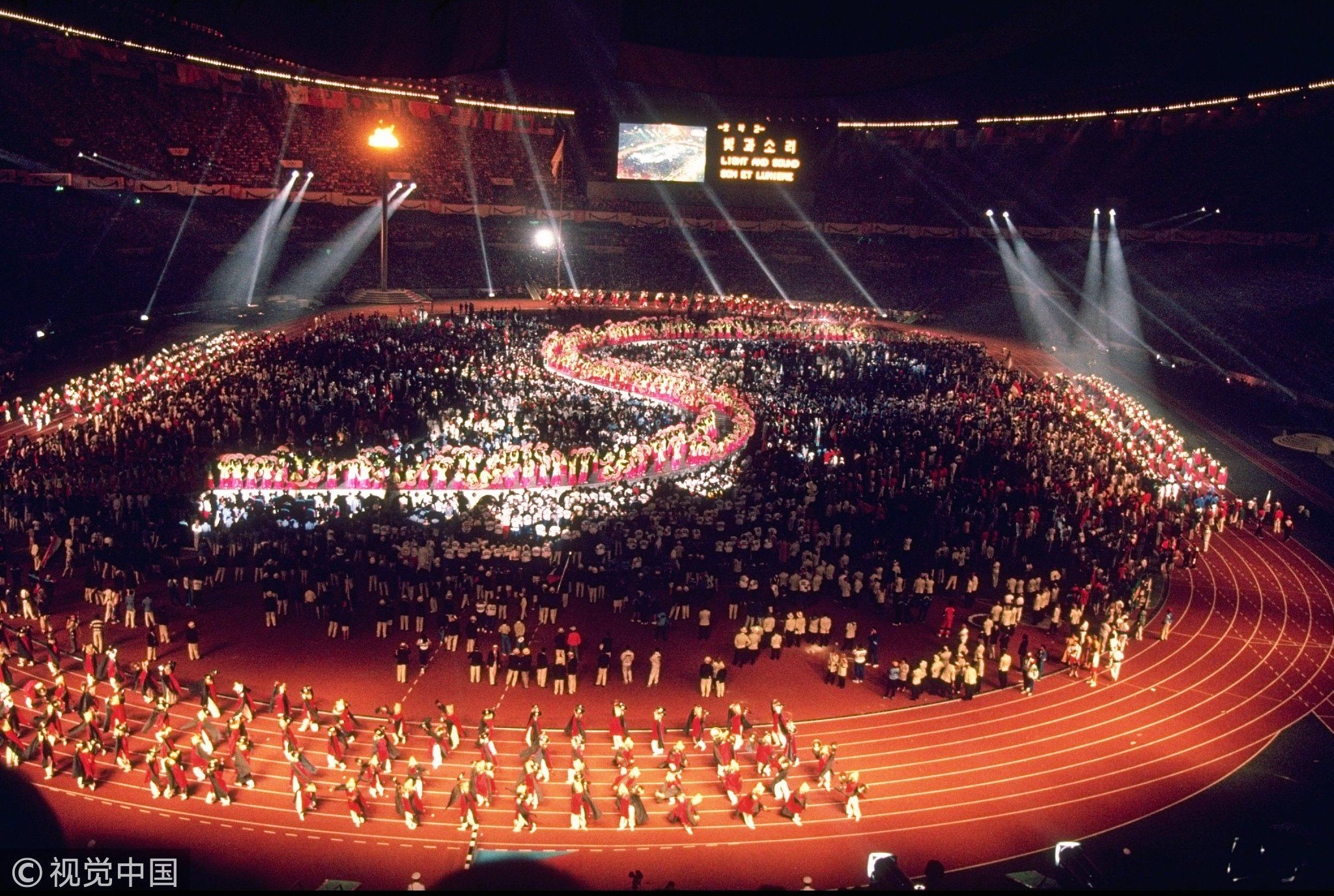
Oct. 2, 1988: General view of the closing ceremony of the 1988 Olympic Games at the Olympic Stadium in Seoul, ROK /Mandatory Credit: Russel Cheyne/Allsport (Photo: VCG)
After a 15-year hiatus, the ROK and DPRK have resumed their friendly basketball match today. They will also field joint teams in canoeing, rowing, and women’s basketball for the upcoming Asian Games in Jakarta, Indonesia, which will be the first instance of unified ROK and DPRK teams at the Asian Games.
Following the “fire and fury” of 2017, relations between the estranged sibling nations have continuously warmed this year. Whether or not the PyeongChang pleasantries knuckle pucked the peninsula into peace is up for debate, but certainly, this is preferable to threats of annihilation.
Still, the division of the Korean Peninsula has for decades remained one of the most intractable geopolitical challenges in the world. It is the last relic of the Cold War, an ossified monument to the vampiric and paranoid quest for global ideological dominance that defined the latter half of the 20th century. The so-called “DPRK problem” has thus far been insoluble, despite attempts at reconciliation through war, peaceful negotiation, and economic cooperation.
The question is whether or not something as nakedly frivolous as sports can achieve a lasting peace. Historically, the answer is yes.
The 1988 Seoul Olympics completely changed ROK's ties with two of its foremost regional rivals: China and the Soviet Union. In a few years, China went from frosty non-dialogue to politely ask for help to run the 1990 Asian Games. The Soviet Union – a Cold War rival – shot down an ROK commercial airliner in 1983, was wooed into Olympic attendance, then proceeded to publicly apologize for murdering the 269 civilians on the downed plane. Full diplomatic relations were established between the ROK and both former foes as a direct result of the 1988 Olympics.
A skeptic would be right to point out that sports diplomacy has never worked with the DPRK. The ROK and DPRK hosted a unified team for the 1991 World Table Tennis Championships, which led to inspirational images of unification flags and reunited families, but there was no meaningful diplomatic breakthrough afterward. Fast-forward 9 years and two seemingly monumental events occurred back-to-back: ROK president Kim Dae-jung and DPRK leader Kim Jong Il held the first-ever inter-Korean summit months before the Sydney Olympics, where athletes from both countries marched together for the opening and closing ceremonies. Again, no real change took place. But in this current atmosphere of unprecedented openness between the DPRK, ROK and US, there is hope that circumstances have changed enough so that new attempts of athletic engagement might be successful.
The most important difference is the DPRK’s status, both domestically and internationally. In 2013, Kim Jong Un announced his national Byungjin policy ( "parallel development") of developing DPRK’s nuclear capabilities alongside its economy. Dozens of nuclear and missile tests later, the nuclear half of that policy has been achieved, and even though the DPRK’s economy has been steady, if not slowly growing, it appears that the national focus is now pivoting to the economic half of Byungjin.
What better way to nurture the DPRK's economy than to use sports to encourage cooperation and exchange – an explicit point of the Panmunjom Declaration signed during the inter-Korean summit in April. With the possibility of eased international sanctions on the horizon and the expectation that the Kaesong Industrial Complex will re-open sooner than later, it is sensible for the DPRK to demonstrate its amicability through the small, innocuous cooperative efforts of unified sports teams.
Of course, all of this requires trusting Kim Jong Un’s declared goals at face value, and the past has shown this to be a mistake. So far, however, Kim has stuck to his stated plans.
Ultimately, sports itself is not diplomacy. If political problems could be solved by playing a game, then we might as well swap the United Nations for FIFA. The power of sports diplomacy is its ability to enhance negotiations, to create and demonstrate political goodwill while appealing directly to the general public. The unified canoe team at the Asian Games will almost certainly not lead directly to the end of the Korean War, but what it can do is move the process along one more step. Sports diplomacy is the proverbial crack in the wall of a dam: a small opening that, with enough persistence flowing through it, can lead to an outpouring.


